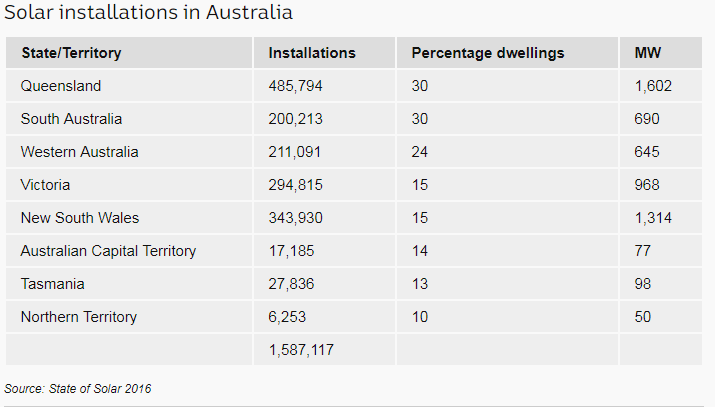As Australia’s sunniest capital (Darwin gets more sunlight year-round than any other major city – an average of nine hours every day), Darwin solar is certainly in the doldrums. As per the Australian PV Institute, the entire Northern Territory’s PV solar output as of January 2017 was a mere 4,049MWh (the lowest in Australia, less than Tasmania, and a ridiculous amount behind state leader Queensland who output 126,629MWh that month). What’s wrong with solar power in the Northern Territory, its capital Darwin, and what can be done to fix it?
Darwin Solar – the situation
According to the Australian Energy Council‘s latest report, residents of the Northern Territory are paying the second highest for electricity in the country, behind Tasmania. The ABC website quotes John Grimes of the Australian Solar Council that a third of homes (freestanding) in QLD and SA have PV solar installed on their roof, but this number is only 11% in the Northern Territory.

The Northern Territory has a renewable target, which is to reach 50% renewable energy by 2030 – so it’s obvious that something needs to give if they’re going to get anywhere close to that. ABC quote an adviser to the NT Government, Alan Langworthy, who notes that the number of solar installations in the area is “artificially low” – noting that 40% of occupants in Darwin are renters, and as solar power for renters is still a tricky and mostly unexplored topic, it makes sense there will be less solar installations.
“Having a very high transient [and] rental population in the NT tends to have driven down enthusiasm in rooftop photovoltaics,” Langworthy said.
Also to note is that solar panels need to be signed off by a building certifier, which adds ~$900 to the cost of each installation. Perhaps another reason uptake has been slow is that back in 2011 when states were offering high tariffs to incentivise initial uptake, the gov’t offered 19.23c/KwH to feed back into the grid – in comparison to 44c/kWh in WA and QLD, or 60c/kWh like Victoria.
Perhaps the answer is for the government to consider some sort of subsidisation scheme or generous tariff for residential solar – maybe something targeted specifically to landlords could be a step in the right direction.
We will see what the NT have in store when they release their policy on how they plan to reach the 50% renewable energy target.
It’s not all doom and gloom for the area, however – Alice Springs solar has been boosted by the $8.3m BESS (Battery Energy Storage System) which Vector Energy will be installing by late 2017 to help improve the reliability of base-load power for Territorians. We’ll wait and see what impact this has on Northern Territory solar and which steps they take in order to try and reach their Renewable Energy Target.


